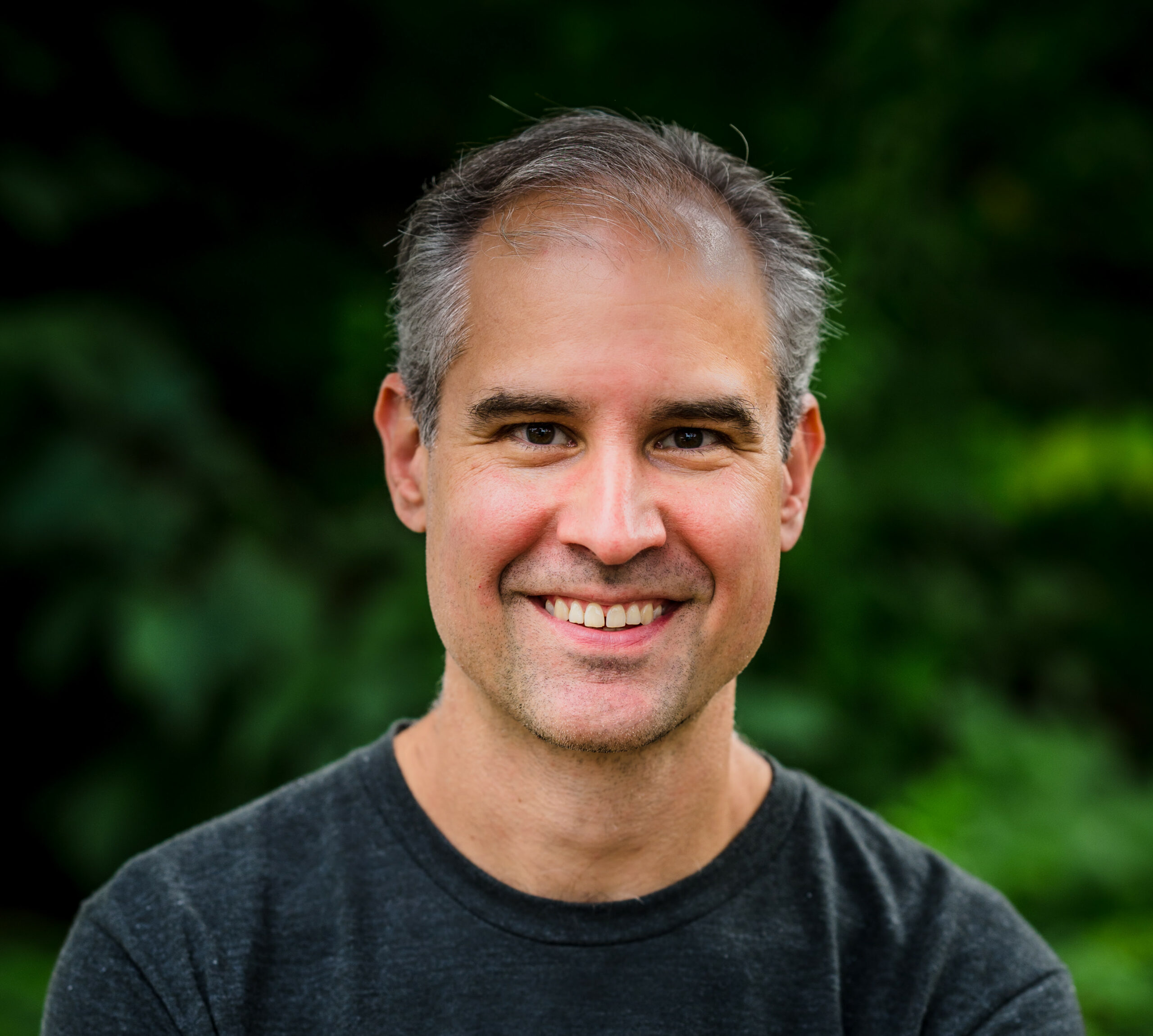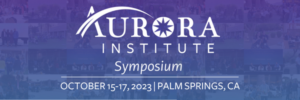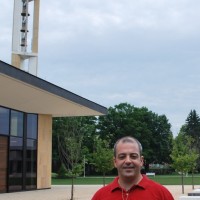January 20, 2023
ChatGPT Growing Strong, Sparking Teacher’s AI Fears
The first of two items from a neo-liberal… This one is an item from a business professor with little direct experience in education, but who believes free market economic principles are the answer to education’s (and pretty much all other society’s social) problems.
Open in app or online You’re on the free list for The Future of Education.
ChatGPT Growing Strong, Sparking Teacher’s AI Fears
College Costs Blown Away—What Else Do I Have To Say?
Yes, my headline was inspired by Billy Joel’s “We Didn’t Start the Fire.” And no, ChatGPT didn’t write it for me. Any credit should instead go to my 8th grade English teacher, Ms. Abramo, who emblazoned the song in our class’s head.
But it does feel like OpenAI’s introduction of ChatGPT has set the world of education on fire.
On the latest episode of Class Disrupted, Diane Tavenner and I dug into just what the implications of this new tool powered by artificial intelligence (AI) should be—and covered in brief a bunch of the hot takes that are out there around its emergence.
For those who haven’t followed, OpenAI is an artificial intelligence company that launched a new tool called ChatGPT in November, which, at the moment, is free. It’s essentially a product that interacts with people in a conversational way. You can ask it questions, and it will give you answers in whatever form you’ve asked it to. Want a song? It will write one. Want a conversation? It’s game. Want a college admissions essay? It’ll do that as well. And what makes it unique is that it can answer follow-up questions, admit it’s made a mistake, challenge incorrect premises, and even reject inappropriate requests. And, at least for me, I’ve found it a bit addictive.
Some school districts, like New York City, have blocked access to the tool—as though students who have Internet access can’t access this on their own at home. I think this is a foolish move at best—but you can check out an older episode Diane and I recorded around why the instinct to ban things in schools more generally just isn’t productive here.
In this episode on AI in education, Diane and I pushed past the instinct to think of this as “the end of high school English.” Instead we offered our take on the kind of innovation that this tool represents and how it could be used productively in schools. Hint: It isn’t about the technology per se. It’s about the model of learning. Check out the episode, “Beneath the AI Hype,” here.
The Case of College Costs
I was curious what an AI graphics generator would create if I asked it what a university powered by artificial intelligence would look like. The above image is what Fotor’s free AI image generator, designed for me.
That also passes for a (laughable and amateurish) transition to move from discussing AI to writing about colleges, specifically the evergreen topic of solving the problem of college cost. That’s what Jeff Selingo and I delved into in the latest episode of Future U.
Spurred by President Biden’s attempt to push loan forgiveness forward (which is paused at this point as the question heads to the Supreme Court, on the heels of multiple courts saying that the president doesn’t have the legal authority to do this), Jeff and I wanted to dig into the challenge of the escalation of college prices and costs more broadly. Although forgiving student loans would provide relief for many students in debt right now, it wouldn’t address the bigger set of issues contributing to the accumulation of debt. For students or taxpayers.
To help us unpack some of the questions—and provide some historical perspective on the issue—we had two guests join us:
- Bill Troutt, who is the president emeritus of Rhodes College and Belmont University, as well as (most pertinently) the chair of the National Commission on the Cost of Higher Education back in the late 1990s
- And Susan Dynarski, a Harvard professor and economist who studies higher education.
Several things struck me in the episode. Among them were:
- How prescient the National Commission on the Cost of Higher Education was all the way back in 1998 when it said that “continued inattention to issues of cost and price threatens to create a gulf of ill will between institutions of higher education and the public they serve.”
- And Bill’s observation that the forgiveness of student loans probably wouldn’t spur much in the way of strategic conversations for boards of trustees at colleges.
But Professor Dynarski’s pushback on one of my questions around college costs also riled me up. Her contention, I think, is that the problem most of the public faces right now is around the price of college, not costs. The reason that prices have risen, she argues, is because of cost shifting—from the public writ large in the form of state spending to the student.
Although I see the point, I think it ignores the issue of rising college expenditures themselves. And my question around the costs behind college—not the price—was intentionally around costs themselves. Because the costs have increased dramatically. This isn’t just a pricing and government subsidy problem. The question was intentionally precise, and I would’ve liked a take on it.
Needless to say, in the second half of the episode when Jeff and I offer commentary on the conversation we had with our guests, I expressed some strong views. You should listen to the whole conversation here, as I imagine my exasperation has some entertainment value, but here’s some of my take.
First, some numbers on college expenditures:
- For the 2021 academic year, U.S. degree-granting postsecondary institutions spent $671 billion (in constant 2020–21 dollars).
- From 2009-10 to 2019-20, public institution’s expenditures rose from $281 to 420 billion in 2020-21 dollars, which is 4.1% per year above inflation and a 50 percent increase.
- At private higher education institutions, spending increased over the last 20 years at 5.17% above inflation—from $81 billion to $222 billion.
- To be clear, spending at 2-year public institutions is basically flat over the past 10 years. Just a slight increase. But that sector is also serving far fewer students than it was a decade ago, so spending per pupil has increased.
So what’s contributing to this rise in underlying costs? The rise is for a multi-faceted set of reasons that all relate to each other.
They aren’t just because of Baumol’s cost disease. They aren’t just because of a lack of economies of scale in traditional models. It is those. But it’s also true that there is evidence that government subsidies are in fact responsible for some small portion of the cost increases as well. Then there are the amenities races that people love to point to—climbing walls and such. It’s frankly less those. But those amenities are emblematic of another big contributor to the increase, which is the cost of complexity. And that comes from trying to be all things to all people and move “up-market,” a phenomenon that we see in countless industries and that helps drive disruptive innovation. But in higher education it’s a phenomenon that’s been studied and labeled as “isomorphism”—or, in cruder terms, an attempt to copy and look like Harvard. Becoming more complex and doing more in a desire to be all things to all people just isn’t possible without dramatically increasing administrative overhead—and that’s indeed what we see in higher education writ large.
Some more numbers:
- From 1987 to 2011, the number of administrators and professional staff more than doubled at colleges and universities. That rate of growth is more than twice as fast as the growth in the number of students being served and also vastly outpaces the growth of faculty. Indeed, in 1980, administrative spending comprised just over half as much as spending on instruction. Now they are about at parity.
- Complexity drives increases in administrative overhead cost at all organizations. As a general rule in organizations, overhead costs decline by 15 percent every time they double in size, but these economies are offset by complexity, where overhead costs per unit increase 30 percent every time the number of pathways that units take within an organization doubled.
So now we’ve got institutions in colleges and universities that generally don’t scale and don’t have economies of scale when they do grow (former Yale President Richard Levin talked to us about this on a past episode of Future U. here) taking on more and more complexity—from students with different needs to a much larger group of majors and academic pathways, research, and more.
And this says nothing of the regulatory burden or the cost increases as institutions seek to climb the traditional Carnegie classification system by stretching more into research and offering bachelor’s, master’s, and PhD degrees. Some more numbers:
- A study of 13 higher education institutions from Vanderbilt University found that regulatory compliance constituted 3 to 11 percent of universities’ nonhospital operating expenses, and 4 to 15 percent of staff and faculty time.
- Research-related regulatory expenses amounted to 11 to 25 percent of all research expenses, while higher education related regulatory expenses constituted 2 to 8 percent of all non-research expenditures.
- Institutions deal with about 18 different federal agencies and approximately 30 different areas of regulations, with more than 200 laws and guidelines.
This of course says nothing of the fact that research drives less time teaching, which reduces teaching productivity and effectiveness.
Bottom line? It’s not the case that these increases in expenditures are simply explained by shrinking investment from state governments, which itself isn’t even a wholly accurate statement.
As a percentage of state budgets, it is true that the percentage spent on higher education has declined. But if you look at this in terms of aggregate dollar amounts, the story is much more complicated. Public investment in higher education today is significantly more in inflation-adjusted dollars than it was during the supposed golden age of public funding in the 1960s. By some estimates, it’s 10 times higher. Now, to be fair, the high-water mark for state appropriations per student was in 1990, but the amounts are still much higher now than they were in the ’60s and ’70s—and the declining enrollment we’re seeing right now may change the stat around when the high-water mark for per-pupil funding was.
There’s a lot more nuance to this conversation. Jeff and I tried to cover much of this. Costs aren’t going up because of some diabolical plot on the part of colleges, that’s for sure. But I do think there are a set of public policy steps that could change the equation—and not rely on states somehow finding dollars that don’t exist because health care and pension costs are eating up large parts of their budgets, such that there just isn’t more money for public higher education institutions. And that answer, to me, isn’t to send more students to community colleges where the success rates are paltry.
In the episode, I offer one set of solutions that Stig Leschly, who founded Duet and is a professor at Harvard and leads College101, has offered. It’s a take that I find compelling. Stig believes that we need governments, in exchange for funding college as richly as they do, to impose a minimum requirement on colleges that they increase economic mobility over a baseline for students. His idea is basically to create a minimum value-added measure relative to cost—and then let students choose in a system that has lots of turnover and a broad array of choices on which the government doesn’t express preferences. But the implication is that there would be a lot of new accredited college entrants, which simply isn’t the case right now.
The reason for having fresh blood come in is, simply put, because of what Clay Christensen and many others’ research has shown—that organizations are built to do what they do but not things they weren’t built to do.
We’re a far way off from Stig’s vision. There’s little to no public accountability for colleges today. Colleges are shrouded in darkness. And entry for new institutions is largely blocked.
I look forward to your thoughts and the conversation to come in the comments after you’ve listened to the whole episode, “Solving the Problem of College Costs,” here.
Two More Before You Go
Lastly, in Connections Quarterly, I authored a piece called “Reinvention with Purpose,” which talks about what K–12 schools should be doing as they reinvent themselves coming out of the pandemic. Their purpose—and that of their students—should be at the heart of any of their efforts. You can read the piece here, which is based on my latest book, From Reopen to Reinvent (which you can check out here of course).
And, in a piece titled “The Third Party Opportunity” for the New York Sun that I won’t send out in full on my Substack because it’s not related directly to education—but does pull from the innovation theories on which I base my work—I opined about the most likely way for a third political party to take root. This is topical, as a former Democratic presidential candidate, Andrew Yang, has launched the Forward party, and the Serve America Movement (SAM) and the Renew America Movement (RAM) have joined him.
The message in the piece is that trying to build a political party at the national level is a fool’s errand.
Instead, those seeking to launch a third political party are better off starting locally by targeting states where one party has effectively collapsed. By targeting these voids, they have a much higher likelihood of changing the political status quo over the long run.
If such a party built momentum, it could gain recognition, support, and money. Then maybe it could have a real impact at the national level and shift the political sands in a way that hasn’t happened since the GOP replaced the Whigs some 170 years ago, leading to Lincoln’s election during another time marked by stark polarization.
As always, thanks for reading, writing, and listening.
Join The Future of Education in the app
Chat with the community, interact with Michael B. Horn, and never miss a post.
No comments yet.
RSS feed for comments on this post. TrackBack URI
- SEO Powered Content & PR Distribution. Get Amplified Today.
- Platoblockchain. Web3 Metaverse Intelligence. Knowledge Amplified. Access Here.
- Source: https://virtualschooling.wordpress.com/2023/01/20/chatgpt-growing-strong-sparking-teachers-ai-fears/
- 10
- 11
- 20 years
- 2011
- 2021
- 420
- a
- About
- above
- academic
- access
- accountability
- accredited
- accumulation
- accurate
- address
- administrative
- administrators
- admit
- After
- agencies
- AI
- ai in education
- All
- Although
- always
- america
- among
- amounts
- and
- Andrew Yang
- android
- android app
- Another
- answer
- answers
- app
- appropriations
- approximately
- areas
- Argues
- around
- Array
- artificial
- artificial intelligence
- Artificial intelligence (AI)
- authority
- auto
- back
- base
- based
- Baseline
- Basically
- because
- becoming
- before
- behind
- being
- believes
- Better
- between
- Big
- bigger
- Billion
- Bit
- blocked
- blood
- book
- broad
- broadly
- Budgets
- build
- built
- Bunch
- burden
- business
- CA
- called
- candidate
- care
- case
- Category
- Center
- Chair
- challenge
- change
- changing
- ChatGPT
- check
- choices
- Choose
- Christensen
- City
- class
- classification
- classification system
- clear
- climb
- collapsed
- College
- Colleges
- Colleges and Universities
- come
- coming
- comment
- Commentary
- comments
- commission
- community
- company
- compelling
- complex
- complexity
- compliance
- complicated
- Comprised
- Connections
- constant
- contributing
- contributor
- Conversation
- conversational
- conversations
- Cost
- Costs
- could
- course
- Court
- Courts
- cover
- covered
- create
- credit
- curious
- data
- deal
- Debt
- decade
- Decline
- Declining
- democratic
- designed
- Diane
- different
- DIG
- direct
- directly
- discussing
- disruptive
- Doesn’t
- doing
- dollars
- Dont
- double
- doubled
- dramatically
- drive
- during
- each
- Economic
- economies
- Economies of Scale
- Economist
- Education
- effectively
- effectiveness
- efforts
- Election
- emergence
- English
- Entertainment
- entrants
- entry
- escalation
- ESSAY
- essentially
- estimates
- Ether (ETH)
- Even
- Evergreen
- Every
- evidence
- exchange
- expenses
- experience
- explained
- express
- expressed
- faces
- fair
- FAST
- fears
- Federal
- feedback
- Find
- finding
- Fire
- First
- flat
- followed
- Forgiveness
- form
- Former
- Forward
- found
- Francisco
- Free
- fresh
- from
- full
- funding
- future
- Gain
- game
- General
- generally
- generator
- get
- Give
- Go
- going
- Golden
- good
- Government
- Governments
- grade
- graphics
- Group
- Grow
- Growing
- Growth
- guests
- guidelines
- Half
- happened
- harvard
- having
- head
- headline
- heads
- Health
- Health Care
- Heart
- help
- helps
- here
- High
- higher
- Higher education
- historical
- Home
- HOT
- How
- HTTPS
- Hype
- idea
- identifier
- image
- Impact
- implications
- impose
- in
- Increase
- increased
- Increases
- increasing
- industries
- inflation
- Innovation
- inspired
- instead
- institutions
- Intelligence
- intentionally
- interact
- interacts
- Internet
- internet access
- Introduction
- investment
- iOS
- iOS app
- issue
- issues
- IT
- items
- itself
- join
- Join us
- joined
- Kind
- Lack
- large
- largely
- larger
- Last
- Late
- latest
- launch
- launched
- Laws
- leading
- learning
- Legal
- Level
- likely
- Line
- List
- Listening
- little
- loan
- Loans
- locally
- Long
- Look
- look like
- Lot
- love
- made
- Majors
- MAKES
- many
- mark
- marked
- Market
- master’s
- measure
- message
- Meta
- Michael
- minimum
- mistake
- mobility
- model
- models
- moment
- Momentum
- money
- more
- most
- move
- movement
- MS
- multiple
- National
- Need
- needs
- New
- New York
- new york city
- November
- Nuance
- number
- numbers
- offer
- offered
- offering
- offset
- ONE
- OpenAI
- operating
- organization
- organizations
- Other
- own
- pandemic
- parity
- part
- parts
- party
- passes
- past
- pension
- People
- percent
- percentage
- perspective
- phenomenon
- piece
- plato
- Plato Data Intelligence
- PlatoData
- Point
- policy
- political
- possible
- Post
- powered
- preferences
- presentation
- president
- presidential
- presidential candidate
- pretty
- price
- Prices
- pricing
- principles
- private
- probably
- Problem
- problems
- Product
- productive
- productivity
- professional
- Professor
- provide
- public
- purpose
- Push
- pushed
- put
- question
- Questions
- RAM
- Rate
- Rates
- Read
- Reading
- real
- reason
- reasons
- recognition
- recorded
- reduce
- reduces
- regulations
- regulatory
- Regulatory Compliance
- related
- relief
- reopen
- replaced
- represents
- requests
- requirement
- research
- resource
- responsible
- Richard
- Rise
- Risen
- rising
- root
- ROSE
- Rule
- Run
- Said
- Sam
- San
- San Francisco
- Scale
- School
- Schools
- Second
- sector
- seeing
- Seek
- seeking
- serve
- serving
- set
- shift
- should
- significantly
- Simple
- simply
- since
- site
- Size
- small
- So
- Social
- Solutions
- Solving
- some
- spam
- specifically
- Spending
- spent
- Staff
- stark
- start
- Starting
- State
- Statement
- States
- Status
- Steps
- Still
- Story
- Strategic
- street
- strong
- Student
- Students
- studied
- studies
- Study
- subsidy
- success
- such
- support
- supposed
- Supreme
- Supreme Court
- Susan
- syndication
- system
- TAG
- Take
- takes
- taking
- Talks
- targeting
- taxpayers
- teacher
- Teaching
- Technology
- terms
- The
- The Future
- the world
- their
- themselves
- things
- Third
- threatens
- time
- times
- to
- today
- tool
- topic
- traditional
- transition
- true
- turnover
- u.s.
- Ubuntu
- ui
- under
- underlying
- unique
- unit
- units
- Universities
- university
- us
- value
- views
- vision
- wanted
- What
- which
- while
- WHO
- wholly
- will
- within
- without
- WordPress
- world
- would
- write
- writing
- year
- years
- Your
- zephyrnet







![[Comunicar 75] Youth, gender identity and power in digital platforms](https://platoaistream.com/wp-content/uploads/2023/03/comunicar-75-youth-gender-identity-and-power-in-digital-platforms-300x70.jpg)





